#menshen
Text

You continue along until your path is blocked by a pair of Oni.
0 notes
Photo


Zhongli Garage Kit by Yu Long Shaonu Menshen, from Genshin Impact
#this is honestly stunning#zhongli#garage kit#gk#Yu Long Shaonu Menshen#genshin impact#anime figure#anime figures#anime#figure#figures#figurine#figurines
304 notes
·
View notes
Text

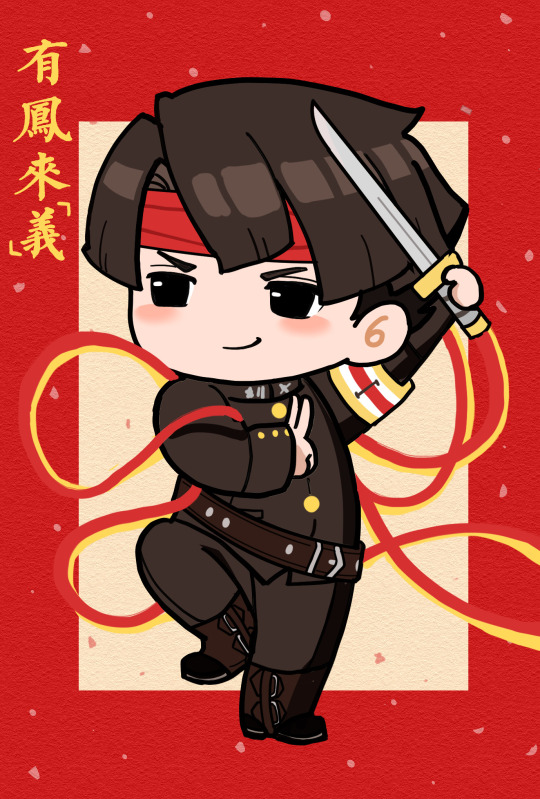
Happy Lunar New Year
I drew the Menshen (Door Gods) of アソ龍 to wish you a good new year.
飞龍在天:The oriental dragon appears in the sky. It means you will have enough courage to face and conquer any challenges or difficulties.
有凤来仪(義):The oriental Phoenix appears. It’s a symbol of good luck. Good things will come soon.
Note: Oriental dragon and phoenix are totally different from western’s.
127 notes
·
View notes
Text
thinking about menshen (door/gate gods) xiao and zhongli (or maybe even ganyu :D) who protect your home from evil spirits. they’ve watched over your family for many generations and have witnessed all manner of human growth and evolution throughout the centuries they’ve stood by as loyal protectors. it’s their duty to protect and guard, so naturally they’re bound by that oath and have silently sworn not to interfere too much with mortal lives, lest they disrupt any sort of balance or coexistence.
but then you’re brought into the world and you’re such a darling child. they can’t help but look after you in little ways. even the normally distant, cold-hearted xiao softens over time. and when it comes time for you to move away for university, it pains them to see you go while they must remain here at your childhood home. perhaps it wouldn’t be a severe breach of their unspoken agreement if they just…make you stay a little longer.
you’ll understand, won’t you?
#meraki mumbles#many xiao thoughts on my brain hehe <3#i miss writing for him orz i need to finish my xiao wips!!!
63 notes
·
View notes
Text
Chapter 9 and 10
Heyo folks taking a @journeythroughjourneytothewest
Had to take a break from book club last week, burn out was very bad. But I've had a week to relax, celebrated my birthday and slept most of the day lol. Let's get back into Journey to the West
First: Chapter 9.
We finally meet our Monk and learn the story of his family!
We don't spend a lot of time learning about them (minus his Dad, gets a thumbs up from me. Kind to all and easy going enough to be like "I got hit by a ball-- oh I'm married now? Okay cool". Like talk about a shotgun wedding), but we do see little bits that remind me of our Monk. He does share his kindness with his Dad, and I genuinely think his anxiety is from his mom. I'll talk about her in a minute because she is a whole other thing.
My one question is... wouldn't other officials notice that Liu Hong, essentially becoming Chen E, had no idea what he was doing??? He went on business trips, did no one recognize he wasn't who he said he was????? I mean you would think anyone who took the exams with him who got positions would be like "uh... that's not him tf??". Or they just did not care. Who knows at this point. Apparently he had Six Eared Macaque level disguise skill, rolled a nat 20 in bullshitery.
Now. Lady Yin. The poor lady went through hell for over 18 years. She had to watch her husband get murdered, had to abandon her baby, and had to play wife to a murderer. Even when her husband came back... I'm not surprised she still ended up passing. That's a lot of guilt (and I'm sure Liu Hong was not kind to her) on her mind for a LONG period of time, nearly two decades. I wish there was a happy ending for the family but I get why it ended how it did, knowing what depression and anxiety can do to people.
Now our baby Monk. Our Xuanzang. I am so proud of him for being as brave as he was. This recently turned 18 year old did everything he could to help his family. Licking his grandma's eyeballs was...a choice. But it was for a good cause so good on him. I can see why he was a good choice as the Scroll Pilgrim.
And as promised, a sketch of Xuanzang

And as a bonus baby Monk with a doggo

But now we move to Chapter 10.
...I legit got annoyed going thru the debate between the fisherman and woodman. Like it went on far longer than it should have. I'm sure there was a profound moment that we're supposed to glean from it but I just wasn't receptive to it. Maybe I'll read it again.
Anyway.
I have been doing some looking into of Chinese historical heroes (I desperately want to read Romance of the three kingdoms, and I need more reading material about folk heroes and heroines) so seeing some references to the stuff I learned made me happy. There was mention of Liu Bei and Zhuge Liang and the painting of The Emporer's Generals on the doors (supposedly the Tang dynasty is where this practice was first used. A few three kingdom folks also get this treatment as door gods, or menshen, along with other important heroes and deities. Makes me wonder if the Emperor essentially deified his Generals and Wei Zheng. How does Heaven handle that?)
Fun fact! In my jttw x mythology story Wukong will work with Asena, mythical wolf mother of the Ashina Clan of Gokturks. Guess which dynasty of China had to deal with them a lot? :)
Anyway.
I've also come to the conclusion that Dragons just like to fuck around and find out. Like, the Dragon King just goes against heaven's orders to spite a very accurate fortune teller, does not even THINK of the consequences, and is surprised Pikachu face when he gets in trouble. Also not sure why he thought appealing to an earthly emporer would save him from THE SUPREME DAOIST DEITY'S JUDGMENT. Like, y'all, I'm beginning to think dragons just don't give a crap or just don't think. Got what he deserved for being dumb. Did the emporer make promises he shouldn't have? No doubt, you don't promise supernatural beings anything because it will make you want to die if they catch wind of you breaking promises, regardless of nationality. Did he deserve what he got? .... I mean historically probably but in the sense of this story, no.
I find the Tang dynasty interesting (because it gave us a certain Empress and had some fun female warriors, like Taizong's sister, who helped her father found the dynasty) and I can definitely thank jttw for getting my attention about it.
I think that's all I have as far as thoughts. And I apologize if my rambles just jumped around too much lol.
Over and out ✌️
#journey to the west#jttw book club#jttw tang sanzang#jttw Xuanzang#xuanzang#slight mention of#jttw x mythology#the more you know
13 notes
·
View notes
Photo

“Altar in the Chinese Joss-house, San Francisco. A probable illustration of Eastern Glory Temple from Harper’s Weekly, March 25, 1871.
The Eastern Glory Temple of Dupont Street
The “Eastern Glory” Temple (東華廟; canto: “Doong Wah miu;” pinyin: “Donghua miao”) reportedly opened in 1871 possibly at 929 Dupont Street. The Daily Alta California of February 10, 1871, reported that a temple “just completed by the six companies” was located in the third story of a row of buildings “on the west side of Dupont street on the west side of Dupont street, between Washington and Jackson.”
The reporter who had been invited to the inaugural rites at the new temple observed that the temple’s central hall honored “Pak Tie,” one of three gods whose statues were so honored. The temple also venerated in its center hall, Gwan Dai (關帝; pinyin: “Guāndì”), the God of War, and Hung Sing, the God of Water. Other deities were venerated in side rooms.




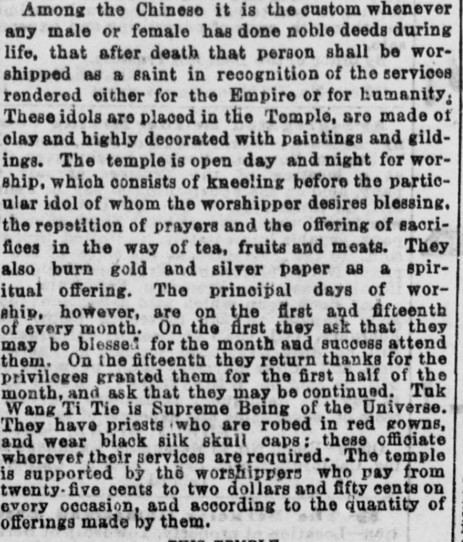



Less than a month later, the Daily Alta California on May 1, 1871, printed a critical letter to the editors from a reader, pointing out numerous inaccuracies in the previous news report. This letter contains the first reference to the temple as the “Tung Wah Min” in reference to its origins in southern China and, perhaps more significant, the poetic inscription which referred to the waves of blessing flowing to the men of eastern Cantonese men. The letter then described the temple’s veneration of “Pak Tie” (北帝; lit. "North Deity;" canto: “Buck Dai”), also known as the “God of the Eastern Peak.”

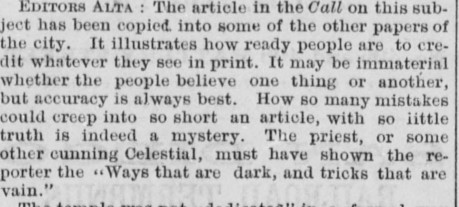






In his superb mapping project of the temples of old San Francisco Chinatown (found here), Peter Romaskiewicz asserts that pioneer photographer Eadweard Muybridge’s photograph “843 -- Chinese Joss House, Guardian of the Temple” c. 1871 was taken in the Eastern Glory Temple. The altar or central shrine shown in the photograph is consistent with the newspaper descriptions.

“843 – Chinese Joss House, Guardian of the Temple” c. 1871 - 1875. Photo by Eadweard Muybridge (from a private collection). The stereograph shows an altar in a temple that is probably the Tung Wah Miu (東華廟; canto: “Doong Wah miu;” pinyin: “Donghua miao”) or the “Eastern Glory” temple to non-Chinese.
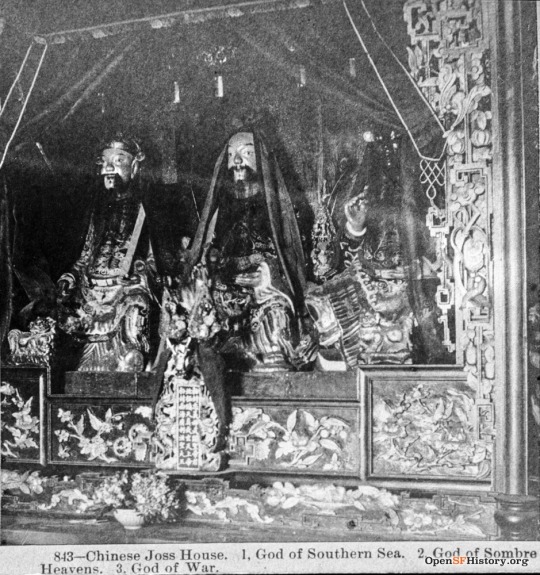
“843 – Chinese Joss House. 1, God of Southern Sea. 2, God of Sombre Heavens. 3. God of War” Detail of the altar of the Eastern Glory Temple, c.1871 - 1875, detail from a photo by Eadweard Muybridge (from the Marilyn Blaisdell collection). In Chinese, the God of Southern Sea would be 南海洪聖大王, Sombre Heaven is 玄武(or 真武)大帝, and the God of War is often ascribed to 關公 (canto: “Gwan Gung”).
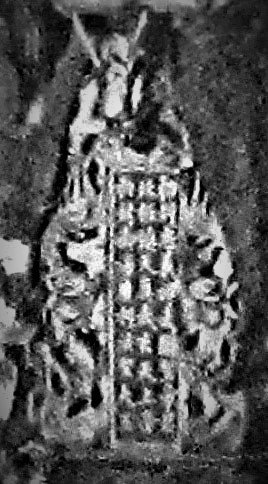
The plaque seen in the Muybridge photo no. 843 presents deity names including “Pak Tie” (canto: “Buk Dai;” pinyin: “Beidi”).
As was the case of Chinatown’s other pre-1906 temples, the Eastern Glory temple was known for its elaborate ceremonies and festivals, which attracted Chinese immigrants from all over San Francisco and beyond. During these events, the temple would be filled with the sounds of traditional Chinese music and the smell of incense, as worshippers prayed and made offerings to the gods.
Assuming that Romaskiewicz accurately located Muybridge’s altar idols image no. 843, the numerical sequence of Muybridge’s other temple images indicates that Muybridge took at least two (and possibly three) photos before entering the Eastern Glory Temple and several other photographs at the same location after capturing image no. 843.
Two photos, 840 and 841, of “menshen” or door gods (文門神; canto: “munh moon sun”) have survived in various public and private collections. The door gods are usually presented in divine pairs, or Shenshu (Chinese: 神荼; Jyutping: “San4 Tou4″).

“840 – Chinese Joss House, Guardian of the Temple” c. 1871. Photo by Eadweard Muybridge (from the Marilyn Blaisdell collection and a stereoview titled “Guardian of the Door” in the collection of California State Library). Based on the negative no. 840, Muybridge probably took this photo of the other entry door to the Eastern Glory Temple before photographing the altar idols and door seen in his images no. 841 and 843. The guardian seen in this image is Shubao (叔寶; canto: “Sook Boh”) , one of two Tang dynasty generals whose image was ordered placed upon gates by the Great Ancestor of the Tang (“Emperor Taizong”).
Since the Tang dynasty, the deified generals Qin Shubao (Chinese: 秦叔寶; Jyutping: “Ceon4 Suk1 Bou2”) and Yuchi Gong (Chinese: 尉遲恭; Jyutping: “Wai3 Ci4 Gung1”) became most ubiquitous as martial door gods (武門神; canto: “moe munh sun;” lit. “military gate gods”). Moreover, the first Chinese in California identified often referred to themselves as “Tohng yahn” (lit. “Tang dynasty people”).

“841 – Chinese Joss House, Guardian of the Temple” c. 1871. Photo by Eadweard Muybridge published as a stereograph by Bradley & Rulofson (from the collection of the Getty Museum). Based on the “841” number, it can be inferred that Muybridge probably took this photo before entering the Eastern Glory Temple and photographing the altar idols seen in his image no. 843. The guardian seen in this image is Yuchi Gong(尉遲恭; canto: “Gwai Chee Gung”), one of two Tang dynasty generals whose image was ordered placed upon gates by the Great Ancestor of the Tang (“Emperor Taizong”).
Based on a comparison of the numerical labeling of the images, and a comparison of the partial signage seen in Muybridge’s photo no. 843, it is possible to connect several images taken of the temple’s resident priest(s) and astrologer outside the entrance.

“844 – Chinese Joss House. Tanist [sic] Priest in full costome.” Photographer Eadweard Muybridge (from the collection of the California State Library).

“Chinese Joss House, Tauist [sic] Priest In Full Costume” c. 1875 (from the collections of the Bancroft Library).

“845 - Chinese Joss House, Astrological Priest”(from the collection of the New York Public Library). This photo appears to have been taken in front of the same building as the photo no. 842 of the Taoist priest.

“846 – Chinese Joss House, Priests discussing Theology.”

“847 – Chinese Joss House. God of the Earth.”
Muybridge’s dogged persistence, and the apparent cooperation of the temple staff, produced an extant photographic record of the Eastern Glory temple provides perhaps the best documentation of the pre-1906 temples in San Francisco Chinatown.
Despite the challenges faced by the Chinese community in San Francisco, including discrimination, poverty, and violence, the Eastern Glory Temple remained a source of strength and resilience. It provided a sense of belonging and identity for the community, and helped to preserve traditional Chinese culture and beliefs in a foreign land.
However, the temple’s days came to an abrupt end in 1906, when a massive earthquake struck San Francisco and destroyed much of Chinatown. The Eastern Glory Temple was among the many buildings that were destroyed in the disaster. Despite its relatively short existence, the Eastern Glory Temple remains an important symbol of the resilience and perseverance of the Chinese community in San Francisco. Today, its legacy lives on through the many temples and cultural institutions that continue to thrive in Chinatown and beyond.
[updated: 2024-5-5]
#Eastern Glory Temple#929 Dupont St.#San Francisco Chinatown#Chinese joss house#Eadweard Muybridge#Beidi#Guandi#Daily Alta California#door gods#Qin Shubao#Yuchi Gong
2 notes
·
View notes
Text
Mythic Creatures by Region & Culture
Part 8: Asia and South Pacific
The Mesopotamian entries are often culture-specific and I'll need to sort them into their respective regions in future.
allegedly Asian
Barometz; Salamander
Smaller Entries:
Akathaso, Burma, tree spirit; Barmanou, Pakistan; Benzaiten; Churel; Creatures of Azerbaijan; Dab Hmong; Dakhanavar Armenian; Ḍākinī; Death; Landlord Deities; Mountain God; Peacock Princess; Sin-you; Sky Fox; Teng; Tenghuang; Xeglun Tungusic
Ainu
Akkorokamui; Amemasu; Hoyau; Kenas-unarpe; Korpokkur; Mintuci
Cambodia; Koan Kroach nightmare fuel; Kting voar also Vietnam; Mrenh kongveal
China
Ao; Ao Guang; Azure Lung; Bai Lung Ma; Bai Suzhen; Bai Ze; Bao Si; Bashe; Bi Fang bird; Bixi; Black Tortoise; Boto_and_Dolphin_Spirits; Cangjie; Chang; Chi; Chinas; Chinese guardian lions; Chinese Monkey Creatures; Chinese serpent killed by Li Ji; Chinese Souls; Chiwen; Chiyou; City God; Daji; Dēnglung; Dilung; Diting; Dogs in Chinese mythology; Dong Yong and the Seventh Fairy; Dǒumǔ; Dragon turtle; Fangfeng; Fangxiangshi; Feilian; Feilung; Feng; Fènghuáng; Fengli; Flying Horse of Gansu; Four Perils; Fox Spirit; Fuxi; Fuzanglung; Fuzhu; Gangcheori; Ghosts in Chinese culture; Gonggong; Guang yi ji; Hairen; He-He Er Xian; Hong; Hòutǔ; Hun and po; Hundun; Huodou; Húxiān; Jiangshi; Jiaolung; Jin Chan; Jinmenju also Japanese; Jiutian Xuannü; Jiutou Zhiji Jing; Jiuweihu; Jué yuán (Japanese version Jueyuan); King Father of the East; Kitchen God; Kuafu; Kui; Lake Tianchi Monster; Luan; Luduan; Lung; Lungma; Lungmu; Magpie Bridge; Magu; Menshen; Mo; Mogwai; Momu; Moon Rabbit; Nian; Nine-headed bird; Nüba; Nüwa; Pangu; Panhu; Panlung; Peng; Penghou; Pig Dragon; Pipa Jing; Pixiu; Pulao; Qianlima also Korean; Qilin; Qingji; Qingniao; Qiulung; Queen Mother of the West; Sanshi; Sha Wujing; Shangyang; Shen; Shen_clam_monster; Shenlung; Shi Dog; Shuimu; Spirit Turtle; Stone Sentinel Maze; Swan Maiden Yao; Taotie; The Governor of Nanke; The Painted Skin; The Nine Peahens and the Golden Apples; Three-legged crow also Japanese and Korean; Tianguo; Tianlung; Tianma; Tu'er Shen; Tubo; Tudigong; Unicorn; Watersheep (see Vegetable Lamb of Tartary); Vermillion Bird; Wangliang; White Tiger; World Turtle; Wutong Shen; Wuzhiqi; Xian; Xiangliu; Xiao; Xiezhi; Xingtian; Xirang; Yao Grass; Yāoguài; Yellow Lung; Yeren; Yeti also Tibetan and Nepali; Yinglung; Zhenniao; Zhu Bajie; Zhulung
Hittite
Annunaki; Illuyanka the equivalent of Hurrian Ḫedammu; Hittite Goddesses of Fate
Hurrian
Annunaki; Ḫedammu the equivalent of Hittite Illuyanka; Tilla; Ullikummi; Upelluri
Iran (Persia)
Akvan Div; Al but also in Mongolia, Russia, Afghanistan, Caucasus; Almas also Turkic and Mongolia; Anguiped also Greek and Roman.; Arzhang Div; Azhdaha; Chamrosh; Div; Div-e Sepid; Fulad-zereh; Gochihr; Griffon; Huma bird; Karkadann allegedly lived in India and Persia; Manticore allegedly lived in India; Peri also Turkic, Islamic (and Indian?); Rakhsh; Shabrang; Shahbaz; Shahmaran Indo-Iranian and Turkic; Shahrokh; Sheshe; Simurgh; Sphinx in a wide sense; Takam; Tyger allegedly lived in Persia; Unicorn; Vegetable Lamb of Tartary the Chinese watersheep allegedly lived in Persia; Werehyena; Winged Unicorn; Zahhāk
Java
Antaboga, pre-Islamic, Hindu; Kakawin; Keong Emas; Wewe Gombel
Korea; Bulgae; Chilseok; Dokkaebi; Dokkaebi bangmangi; Egg Ghost; Gasin (house god); Gunungsin; Gwisin; Haesindang Park; Inmyeonjo; Jihaguk daejeok toechi seolhwa; Korean dragon; Korean Virgin Ghost; Munshin; Namu doryeong; Pulgasari; Qianlima also Chinese; Ryong; Samsin Halmeoni; Seonangshin; Sosamsin; The Heavenly Maiden and the Woodcutter; Three-legged crow also Japanese and Chinese; Ungnyeo; Ureongi gaksi;
Mongolia
Al but also in Persia, Russia, Afghanistan, Caucasus; Almas also Iran and Turkic; Aq Bars, winged snow leopard, heraldry from 800s onwards, also Slavic; Mongolian Death Worm
Myanmar; Manussiha; Nat; Nawarupa; Pyinsarupa; Sphinx in a wide sense; Thayé; Yokkaso
Nepal
Gurumāpā; Khyāh; Kichkandi; Lākhey; Murkatta; Yeti also Chinese and Tibetan
Philippines
Alan of the Tinguian people; Amalanhig of the Visayan; type of Aswang; Amomongo of the Visayan; Angalo of the Ilocano; Anggitay Philippine centauride, female Tikbalang; Anito; Aswang; Bakunawa; Bal-Bal; Batibat of the Ilocano; Berbalang of Mindanao towns; Berberoka northern Luzon; Bernardo Carpio; Bungisngis Meluz, Orion, Bataan and Batangas; Busaw; Buso Bagobo; Dalaketnon Cebuano; Ekek; Engkanto; Ibong Adarna; Kapre; Kataw; Kumakatok; Manananggal; Manaul; Mandurugo; Minokawa; Nuno sa punso; Philippine Mytic Creatures; Pugot; Sarangay; Sarimanok; Sigbin; Sirena; Siyokoy; Tigmamanukan; Tikbalang; Tiyanak; Wakwak
allegedly Scythian (rider culture, no written records, all inhabitants and creatures based on Greek reports)
Amazons, Amazons (List); Arimaspi north Scythia; Scythian genealogical myth; Scythian religion; Scythians; Tarand; Vegetable Lamb of Tartary
Taiwan
Hanitu; Mo-sin-a; Ta'ai; Tek-ko-kui
Thai
Apsonsi; Cha kla; Hatsadiling; Hemaraj; Kong Koi; Krahang; Krasue; Kuman Thong; Mae Nak Phra Khanong; Mae yanang; Nang Mai; Nang Ta-khian; Nang Tani; Nariphon; Ninlaret; Phi phong; Phi Tai Hong; Phisuea Samut; Pop (ghost); Sphinx in a wide sense; Sudsakorn; Suvannamaccha
Tibet
Gyalpo spirits; Ro-langs; Simhamukha; Snow Lion; Tibetan myth; Wind Horse; Yeti also Chinese and Nepali
Vietnam
Hồ ly tinh; Kting voar also Cambodia; Lạc bird; Nghê; Rồng ; Vietnamese Dragons
Turkic
Äbädä, also found in Siberian mythology; Abasy, also found in Siberian mythology; Aiy Yakut; Al in Mongolia, Russia, Afghanistan, Caucasus; Al Ana; Al Basty from Sumerian; Alara, also found in Siberian mythology; Almas also Iran and Mongolia; Archura; Asena; Ayaz Ata; Bai Baianai also Yakut; Basty Turkic alp or mare; Bichura Turkic household spirit; Chai nenesi; Chesma iyesi; Çor also Siberian; Ergene iyesi; Erkenek; Hortdan; Irshi; Itbarak; İye; Konrul; Korbolko; Kormos; Mhachkay includes Tatar lore; Mu shuvuu; Örek; Peri also Persian, Islamic (and Indian?); Qarakorshaq; Sazakan; Shahmaran Indo-Iranian and Turkic; Sheka; Shurali; Su iyesi; Susulu; Tepegöz; Tulpar; Turul also Hungarian; Upiór also Slavic; Uylak; Werewolf; Yekyua; Yelbeghen; Yer iyesi; Yer-sub; Yuxa
Turkish
Gelin; İn Cin; Uzuh
Siberia
Äbädä, also found in Turkic mythology; Abasy, also found in Turkic mythology; Aiy Yakut; Alara, also found in Turkic mythology; Bai Baianai, also found in Turkic mythology; Çor also Turkic; İye also Turkic\; Menk; Oksoko Yakut; Ongon; Pitsen; Sihirtia; The Great Snake; Yekyua; Yelbeghen
South Pacific Islands
Abaia: Fiji, Solomon and Vanuatu Islands. ; Abere, unspecified "Melanesia"; Adaro, Solomon Islands, merfolk; Aitu, from Maori to various east and west Polynesian cultures; Amai-te-rangi Cook Islands; Apukohai, Hawaii; Aremata-Popoa and Aremata-Rorua; Atonga Samoa; Atua; Auriaria Kiribati; Avatea Cook Islands; Baloma; Barong; Flaming Teeth Fiji; Gazeka Papua New Guinea; Hatuibwari Solomon Islands; Ila (Samoan myth); Kae and Longopoa; Kai-n-Tiku-Aba; Kalamainu'u Hawaii; Kawas; Kihawahine; Kupua Hawaii; Losi Samoa; Menehune Hawaii; Miru Cook Islands; Moʻo Hawaii; Moso's Footprint Samoa; Nawao Hawaii; Nei Tituaabine; Nganaoa; Nightmarchers Hawaii; Pahuanui Tahiti and Society Islands; Pua Tu Tahi; Rogo-Tumu-Here; Savali; Sina and the Eel; Talamaur Vanuatu; Tamangori; Tangaroa; Taotao Mo'na Mariana Islands; Tapairu Cook Islands; Tiʻitiʻi; Tikokura; Tinirau similar to Māori Tinirau and Kae;
Māori
Aitu also common in all parts of East and West Polynesia, sometimes with slightly different meanings; Atua; Hāhau-whenua; Hākuturi; Hawakai; Hemā; Hine-nui-te-pō; Kiwa; Kumi Lizard; Kurangaituku; Maero; Manaia; Maori ghosts; Matuku-tangotango; Moehau; Nuku-mai-tore; Pania of the Reef; Paoro; Patupaiarehe; Ponaturi; Pouākai; Taniwha; Taoroinai; Te Wheke-a-Muturangi; Tinirau and Kae; Tipua; Waitoreke; Whakatau; Whiro
Indian Ocean Islands
Folklore of the Maldives; Rannamaari
Japan (separate categories for Ainu and Okinawa)
Abumi-guchi; Abura-akago; Abura-sumashi; Aka Manto; Akabeko; Akaname; Akashita; Aketeko; Akubōzu; Akugyo; Akuma; Akurojin-no-hi; Ama no Fuchigoma; Amabie; Amanojaku; Amanozako; Amazake-babaa; Amefurikozō; Ameonna; Amikiri; Amorōnagu; Aoandon; Aobōzu; Aonyōbō; Aosaginohi; Arikura-no-baba; Ashi-magari; Ashinaga-tenaga; Ayakashi; Azukiarai; Azukibabaa; Azukihakari;
Bake-danuki; Bake-kujira; Bakemono; Bakeneko; Bakezōri; Baku; Banchō; Basan; Betobeto-san; Binbōgami; Biwa-bokuboku; Boroboroton; Bukit Timah Monkey Man WWII Japanese soldiers in Bukit Timah (Singapore) saw this; Byōbunozoki;
Chimimōryō; Chōchin'obake; Chōchinbi;
Daidarabotchi; Daikokuten; Danzaburou-danuki; Datsue-ba; Dodomeki; Dōsojin;
Ehon Hyaku Monogatari; Emishi; Enenra;
Fūjin; Funayūrei; Furaribi; Furutsubaki-no-rei; Futakuchi-onna;
Gagoze; Gashadokuro; Gazu Hyakki Yagyō; Gohō dōji; Goryō;
Hagoromo (swan maiden play); Hakuzōsu; Hanako-san; Hannya; Hare of Inaba; Harionagu; Hashihime; Heikegani; Hell Courtesan; Hibagon; Hiderigami; Himiko; Hito-gitsune; Hitodama; Hitotsume-kozō; Hitotsume-nyūdō; Hone-onna; Hotoke; Hyakki Tsurezure Bukuro; Hyakki Yagyō_Wild Hunt; Hyōsube; Hyottoko;
Ibaraki-dōji; Ikiryō; Ikuchi; Inari Ōkami; Inugami; Inugami Gyōbu; Ishinagenjo; Isonade; Issie; Issun-boushi; Itsumade; Ittan-momen;
Janjanbi; Japanese Serpent; Jikininki; Jinmenju also Chinese; Jinmenken; Jorōgumo; Jubokko; Jueyuan (Chinese version Jué yuán);
Kaibyō; Kamaitachi; Kami; Kamikiri; Kappa; Karura; Kasa-obake; Kasha; Kawauso; Kechibi; Keneō (oni); Kidōmaru; Kijo (folklore); Kinoko; Kitsune; Kitsune no yomeiri; Kitsunebi; Kiyohime; Kodama; Kōga Saburō; Komono; Konaki-jiji; Konjaku Gazu Zoku Hyakki; Konjaku Hyakki Shūi; Konpira Gongen; Koromodako; Koto-furunushi; Kotobuki; Kōya Hijiri; Kubikajiri; Kuchisake-onna; Kudagitsune; Kudan; Kumiho; Kuraokami (ryu); Kuro-shima (Ehime); Kurozuka; Kuzenbo; Kuzunoha; Kuzuryū;
Makuragaeshi; Maneki-neko; Matarajin; Mazoku; Megijima; Menreiki; Miage-nyūdō; Mikaribaba; Mikoshi-nyūdō; Misaki; Mishaguji; Mishihase; Mizuchi; Mokumokuren; Momiji; Momotarō; Mononoke; Mōryō; Mujina; Myōbu;
Namahage; Namazu; Nekomata; Ningen; Ningyo; Niō; Noderabō; Noppera-bō; Nue; Nuppeppō; Nurarihyon; Nure-onna; Nuribotoke; Nurikabe; Nyūdō-bōzu;
Oboroguruma; Ochimusha; Ōkubi; Okuri-inu; Ōmukade; Oni; Oni Gozen; Onibi; Onihitokuchi; Onikuma; Onmyōji; Onryō; Ōnyūdō; Ootakemaru; Orochi; Osakabehime; Osaki; Otoroshi; Oukami; Ouni;
Raijin; Raijū; Rashōmon no oni; Reikon; Rōjinbi; Rokkaku-dō; Rokurokubi; Ryū; Ryūgū-jō; Ryūjin;
Sakabashira; Samebito; Sankai; Sarutahiko Ōkami; Satori; Sazae-oni; See-Hear-Speak No Evil; Sessho-seki; Setsubun; Shachihoko; Shapeshifter; Shibaemon-tanuki; Shichinin misaki; Shidaidaka; Shikigami; Shikome; Shinigami; Shiranui; Shirime; Shiryō; Shōjō; Shōkera; Shuihu; Shuten-dōji; Smallpox demon; Sōjōbō; Sorei; Sunekosuri; Suzuka Gozen;
Takaonna; Takarabune; Tamamo-no-Mae; Teke Teke; Tengu; Tenka; Tennin; Tenome; Tentōki and Ryūtōki; Tesso; Three-legged crow also Chinese and Korean; Tōfu-kozō; Toyotama-hime; Tsuchigumo; Tsuchinoko; Tsukumogami; Tsukuyomi-no-Mikoto; Tsurara-onna; Tsuru no Ongaeshi; Tsurube-otoshi; Tsurubebi;
Ubagabi; Ubume; Umi zatō; Umibōzu; Ungaikyō; Ushi no toki mairi; Ushi-oni; Uwan;
Waira; Wani; Wanyūdō; Watatsumi;
Yako; Yakusanoikazuchi; Yama-uba; Yamabiko; Yamabito; Yamainu; Yamajijii; Yamata no Orochi; Yamawaro; Yanari; Yashima no Hage-tanuki; Yato-no-kami; Yobuko; Yōkai; Yōsei; Yosuzume; Yotsuya Kaidan; Youkai; Yuki-Onna; Yume no seirei; Yūrei;
Zashiki-warashi; Zennyo Ryūō; Zuijin; Zashiki-warashi
Okinawa
Kijimuna
allegedly Arabic
Cinnamologus
Morocco
Aisha Qandicha
Mesopotamia
Abyzou; Annunaki; Anzû; Ardat-lilî; Beings of Irkalla or Kur; Bull of Heaven; Dagon; Edimmu; Ghosts in Mesopotamian culture; Hanbi; Humbaba; Igigi; Kilili; Kulullû; Kusarikku; Labbu; Lahamu; Lamashtu; Lilin also in Jewish folklore; Lotan; Lugal-irra; Lulal; Mukīl rēš lemutti; Mušḫuššu; Mušmaḫḫū; Namtar; Ninimma; Ninurta; Pazuzu; Rabisu; Scorpion men; Sea goat; Serpopard; Seven-headed serpent; Six-headed Wild Ram; The Four Winds; Tiamat; Udug; Ugallu; Umū dabrūtu; Uridimmu; Urmahlullu; Wild Man, Wild Woman ; Wild Men, Wild Women Enkidu; Zaqar
allegedly Mesopotamian
Sirin
Akkadian
Abkallu, also Sumerian; Akhkhazu, later Babylonian; Alû also Sumerian, an utukku with no mouth, ears, lips; Asag also Sumerian; Bašmu (possibly other parts of Mesopotamia, but badly attested); Lilu; Ušumgallu
Assyrian
Adrammelech killed an Assyrian king; Alal references Babylonians
allegedly Assyrian
Aralez in Armenian folklore, Semiramis controls an Aralez
Babylonian
Akhkhazu, earlier Akkadian; Alal from Chaldean-Assyrian sources; Kulilu
Sumerian
Abkallu, also Akkadian; Al Basty, later also in Turkic traditions; Alû also Akkadian, an utukku with no mouth, ears, lips; Asag also
Akkadian
Kuli-ana; Palm Tree King#
Mesopotamian (Other)
Atargatis Canaanite goddess; Tannin Canaanite; Yam Canaanite
Buddhism
Acala, Vajrayana Buddhism & East Asian Buddhism; Apalala a naga king; Apsara; Asura; Āṭavaka; Cakrasaṃvara Tantra; Ḍākinī; Diting; Girimekhala; Hayagriva; Heruka; Hevajra; Hungry Ghost; Kalaviṅka; Kangiten Buddhism in Japan; Kṣitigarbha; Kuṇḍali; Mahakala; Mahamayuri; Mahoraga; Manjushrikirti; Mara; Mucalinda; Nariphon; Niō; Preta; Rakta Yamari; The sixteen dreams of King Pasenadi; Trailokyavijaya; Tulpa; Vajrakilaya; Vajrayakṣa; Vemacitrin; Wisdom King; Wrathful deities
Jainism
Ambika; Dharanendra; Gomukha; Jwalamalini; Mahoraga; Nabhi; Rishabhanatha
India
Aghasura asura in shape of 8 mile serpent (500 CE to 1000 CE, but most likely between 800 and 1000 CE); Agni_deity; Airavata; Akshayavata tree (estimated between the 4th and 15th century CE. Some parts of the text may be from the 750 to 1000 CE period.); Anasuya; Andhaka asura with 1000 heads 2000 eyes 1000 arms; Angiris; Apsara; Arjuna; Asi; Asura; Bakasura a rakshasa (despite "asura" in the name); Barbarika; Basnak Dau; Bhagadatta; Bhargava; Bhoota; Bhramari; Bhringi; Brahmahatya; Brahmarākṣasaḥ; Buru; Chakora; Chana and Munda; Chaturbhuja; Chedipe; Chidambara Rahasiyam; Chinas; Chir Batti ghost light; Chitrāngada; Chyavana; Creatures from Vetala Tales; Daayan; Daitya; Daksha\; Daksha yajna; Danava; Daruka; Dawon; Devas; Devatas; Durgamasura; Durukti; Dvarapala; Dvipa; Gādhi; Gaja; Gajasimha; Gaṇa; Gandaberunda; Gandharva; Garuda; Ghosayatra Parva; Grahana; Guhyaka; Gusainji Maharaj; Halahala; Hamsa; Haryashvas and Shabalashvas; Hidimba; Hiranyakashipu; Hiranyaksha; Ichchadhari naag; Ila; Ilavida; Ilvala and Vatapi (asura); Iravati; Jahnu; Jarita; Jvarasura; Kabhanda; Kālakeya ; Kālakeyas; Kalanemi (asura); Kalanemi (Ramayana); Kaliya; Kamadhenu; Kamakhya; Ketu; Keukegen; Kimpurushas; Kinnara; Kirmira; Kirtimukha; Koka and Vikoka; Kotavi; Kubera; Kumbhakarna; Kumbhāṇḍa; Kuntilanak ; Kurma; Kuttichathan; Lajjā Gaurī; Mada; Madhu-Kaitabha; Madhusudana; Mahabali; Maharajikas; Mahishasura; Mahoraga; Makara; Manasa_Snake_Goddess; Mānasaputra; Mande Barung; Maṇibhadra; Manohara; Mara_Goddess2 identical name to another death goddess Mara_Goddess (unrelated???); Maricha; Matsya; Mayasura; Monkey-man of New Delhi; Mṛtyu; Mukasura; Naga; Naga fireballs; Naga people; Nagaraja; Naimiṣāraṇya; Nandi; Narakasura; Narantaka-Devantaka; Narasimha Half human / Half Lion --> how Vishnu fulfills a prophecy like Eowyn or MacBeth; Navagunjara; Nivatakavacha; Pahlavas; Panchajanya; Panchamukha; Pichal Peri; Pippalada; Pishachas; Pitr; Poubi Lai; Prahlada; Pratyangira; Puloman; Putana; Rāgarāja; Rākshasas; Raktabīja; Ravana; Rishyasringa; Rukmavati; Samagana; Sampati; Sarama; Sarpa Kavu; Shahmaran Indo-Iranian and Turkic; Shambara; Shankha; Shatarupa; Shesha; Shikhandi; Shukra; Sphinx in a wide sense; Srbinda; Subahu; Sunda and Upasunda; Suparṇākhyāna; Ten Giant Warriors; Tree of Jiva and Atman; Tripurasura; Trishira; Tumburu; Ucchusma; Uchchaihshravas; Ulupi; Upamanyu; Vadavagni; Vahana (Mount of a Deva); Vajranga; Vanara; Varaha; Varahi; Vasuki_Naga_King; Vel; Vetala; Vidyādhara ; Vidyādharas; Viprachitti; Viradha; Vishala; Vritra; Vritra (dragon); Vyaghrapada; World Elephant; World Turtle; Yaksha; Yakshini; Yali; Yama; Yamaduta; Yamantaka
allegedly Indian
Abarimon; Acheri; Aeternae; Astomi Pliny the Elder; Bragmanni; Calingae Pliny the Elder; Crocotta; Gold-digging ant; Griffon; Indus worm; Karkadann; Kratu; Mandi; Manticore; Monopod; Nuli; Odontotyrannus; Panther; Pard; Rompo; Salabhanjika; Sciritae; Sharabha; Tandava; Unicorn; Wild Man, Wild Woman ; Wild Men, Wild Women
Ayyavazhi Sect
Kroni
Assam
Baak
Bengali
Bengali myths; Byangoma
Kannada
Nale Ba
Kashmir
Bramrachokh will-o-wisp; Rantas
Kerala
Aana Marutha
Malayalam
South India; Kallana
Manipur / Meitei
Haosi Namoinu; Helloi; Hingchabi; Kanglā Shā; Kao; Keibu Keioiba; Khoirentak tiger; Khongjomnubi Nonggarol; Lai Khutshangbi; Meitei dragons; Meitei Mythic Creatures; Nongshāba; Pākhangbā; Sagol kāngjei; Samaton; Uchek Langmeitong; Umang Lai Sanamahism; Yenakha Paotapi
Sri Lanka; Devil Bird; Maha Sona; Nittaewo; Reeri Yakseya; Sphinx in a wide sense; Tharaka; Yakseya and Yakka
Tamil
Mamuni Mayan; Nadi astrology; Tamil myth
Indonesia
Babi ngepet; Bukit Timah Monkey Man Singapore; Hainuwele; Hantu; Hantu Air; Hantu Bongkok; Hantu Raya; Hantu Tinggi; Jenglot; Kuntilanak also India; Lang Suir aka Langsuyar; Malay Creatures; Manseren Manggoendi; Nyi Roro Kidul; O Tokata; Orang bunian; Orang Mawas; Orang Minyak; Orang Pendek; Pelesit; Penanggalan similar to Philippines Manananggal; Pocong; Polong; Putri Tangguk; Rangalau Kiulu Phantom; Seri Gumum Dragon; Seri Pahang; Singa; Suanggi; Suangi; Sundel bolong; Tuyul; Warak ngendog
allegedly Malay
Á Bao A Qu; Abath
Bali
Bhoma; Gajamina; Leyak; Ogoh-ogoh
Flores
Ebu gogo
Notify me about any mistakes or if any of these mythic figures, beings and creatures should not be used in art or fiction.
#mythic creatures#mythic creature list#legendary creatures#legendary creature#legendary being#legendary beings#creature list#legendary creature list#monster list#list of monsters
1 note
·
View note
Text
Sustainable Pouch Packaging for a Sustainable Planet
🌍 Are you committed to preserving the environment? Is your company prepared for #sustainable productions? ♻️ If you need to package products in pouches with caps, and you would like to be sustainable, we can help you!
💚 Due to our customers inquiring for more and more sustainable #innovations, and as a result of our firm commitment to the planet, we would like to present our most recent collaboration with our partner Menshen Iber: a mono-material pouch made with our HFFS technology, recyclable film, and the new Menshen LoTUS sustainable spout. 🔝
👀 In the following video you can see how this production is made:
Visit us for more details,
🌐 www.trivenipackaging.com
📧 [email protected]📞+971 42859967 / 42863865
0 notes
Text
WAS IST EINE GESUNDE ERNÄHRUNG?
Gesunde Ernähung ist eine Ernährung, die das Heranwachsen, die optimale Entwicklung und die volle Funktionsfähigkeit unterstützt, die Gesundheit fördert und nichtübertragbaren Krankheiten wie Diabetes, Herzerkrankungen, Schlaganfall und Krebs vorbeugt.
Eine gesunde, lebenslange Ernähung ist für die Erhaltung und Verbesserung der Gesundheit heutigerund künftiger Generationen von wesentlicher Bedeutung und eine Vorussetzung ür das Erreichen einer aktiven Langlebigkeit.
Die zunehmende Prodktion von verabeiteten Lebensmitteln, die rasche Verstdterung und die sich ändernden Lebensgewohnheiten haben zu gefährlichen Veränderungen in den Ernährunsgewohnheiten der Menshen weltweit geführt.
0 notes
Photo
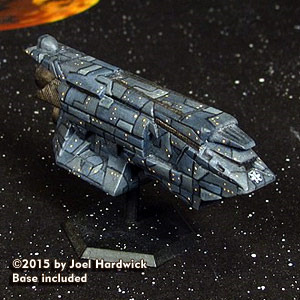



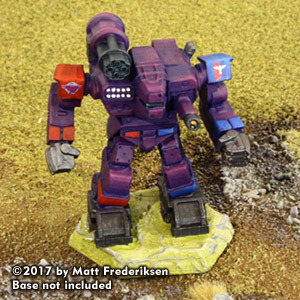
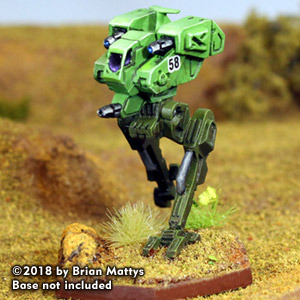

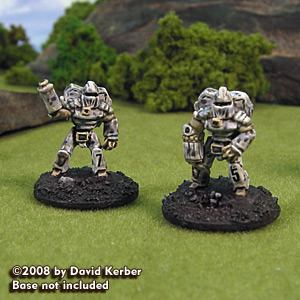


Just in from Iron Wind Metals...restocks for BattleTech!
Watch for another announcement later before you rush off to buy! You may find it worth the wait!
10-044 Quick Start Lance Pack
20-188 NIGHT LORD BATTLESHIP
20-216 SCORPION SCP-12C
20-230 WHITE FLAME WHF-3B
20-309 BLIZZARD HOVER TANSPORT (2)
20-319 ARBALEST / ARBALEST II Variant
20-425 Shiro SH-P
20-458 Cattlemaster RA-4 Hunter / Herder
20-496 Thunderbird TRB-D36 Aero Fighter
20-5009 Quasit QUA-51M MilitiaMech
20-5042 Ebony MEB-9 / MEB-10
20-5096 Dragon II DRG-11K
20-5109 Shockwave SKW-2F
20-5148 Flea FLE-14
20-5177 Emperor EMP-1A
20-5183 Locust LCT-1V
20-5205 BattleMaster BLR-1G / 1Gb
20-5207 Black Knight BL-9KNT
20-632 PREDATOR
20-784 Myrmidon Medium Tank (2)
20-800 Hex Bases (4)
20-886 Vulcan VL-2T
20-929 URSUS
20-932 Vindicator VND-1R
20-941 MENSHEN MS1-0 PRIME
BT-031 Infiltrator MK 2
BT-118 Shilone Micro Fighter
BT-134 Gray Death Legion Battle Armor
BT-188 Nighthawk Battle Armor
BT-226 Fast Recon
BT-227 Thunderbird Battle Armor
BT-287 Zephyros Infantry Support Vehicle
BT-292 Shiro SH-2P
BT-370 Kurita Infantry (3)
BT-372 Savannah Master Hovercraft
BT-381 Basic Inner Sphere Battle Armor (3)
BT-385 Grey Death Legion Battle Armor (3)
BT-413 Marauder Battle Armor
BT-439 Black Wolf Battle Armor
OP-105 Pulse Lasers
OP-108 Large Launcher Plates
OP-111 Inner Sphere Small, Medium, and Large Launchers
https://www.ariesgamesandminis.com/index.php/shopping/category/12-iron-wind-metals.html
#battletech #alphastrike #ironwindmetals #battletechalphastrike #miniatures #catalystgamelabs #battlemech #battletechminiatures #battletechpaintingandcustoms #mecha #tabletop #tabletopgames #tabletopgaming #wargaming #wargames #hobby #scifi #sciencefiction #miniaturepainting #mech #hovertank #6mmminis #6mmscifi #feldherr #dougram #gundam #robotech #armypainter #thearmypainter #chessex
0 notes
Text
Mespack to showcase packaging developments at All4Pack

Mespack, an international manufacturer of flexible packaging machinery, offering horizontal and vertical form-fill-seal equipment to produce sachets, stick packs, stand-up pouches, or other film-based packaging, will showcase its latest packaging developments that have been co-created with key industry partners such as Amcor, BBC Cellpack, Dow, Hoffer, Menshen, Mondi, and Uflex at All4Pack.
From November 21st to 24th, Mespack will once again be present at All4Pack, the flagship event for the packaging industry and logistics ecosystem. The trade show offers a packaging, processing, printing, and logistics offer for all every activity division associated with the packaging and intralogistics sectors. It will be held at the Paris Nord Villepinte venue in France.
At this edition of the event, Mespack will strengthen its role as a leading company in the flexible packaging machinery sector to develop smart technology, which entirely focuses on innovation and sustainability.
In regard to the French market, which is extremely committed to the adaptation of the new recyclable material packaging legislation, Mespack would like to emphasize its capacity in reference to the integration into new machines as well as retrofits and upgrades to its installed machines allowing them to be operable with recyclable, recycled or biodegradable laminates.
Mespack’s booth will have samples of its most recent sustainable packaging developments, which were co-created with key partners such as Amcor, BBC Cellpack, Dow, Hoffer, Menshen, Mondi, and UFlex. Of particular interest, are the recyclable stand-up pouches, with and or without spouts made of mono-material.
Held every two years, All4Pack is the trade fair of choice for 66,000 professionals, who congregate to discover in its aisles the innovative and sustainable packaging solutions provided by 1,100 exhibitors and brands. Visitors can find us at Booth 5/A C 160.
0 notes
Video
Da liegt ein Puck auf dem See by Pascal Volk
Via Flickr:
Das sollte die Aufnahme werden, in der der Puck beschleunigt wird und Eis durch die Luft fliegt. Stattdessen machte es sich der Spieler auf dem Eis gemütlich. Vor seinem Schlittschuh ist ein kleines Bisschen Eis in der Luft zu sehen.
#Berlin#Rahnsdorf#Müggelsee#Strandbad#See#Lago#Lake#Berlin Treptow-Köpenick#frozen#zugefroren#congelado#People#Menshen#Leute#frío#kalt#cold#gente#Eisfläche#superficie helada#ice#frozen surface#Eis#Puck#hockey puck#tejo#disco#pastilla#gestürzt#toppled
2 notes
·
View notes
Photo

Hey dudes, today I’m hosting a virtual conference about sustainability 🌳 #maxisarwas #moderatorin #emcee #presenter #host #eventtrends #eventplanner #menshen (hier: Düsseldorf, Germany) https://www.instagram.com/p/CMMuXQqFT3K/?igshid=2ez3jtj5h1pf
0 notes
Photo

白熊版门神,祝大家鸡年大吉🐔。
2 notes
·
View notes
Text
Why carrying skeleton keys are important!

I've talk about things my elders told me to carry and now we will talk about skeleton keys!
The spiritual meaning of Skeleton Keys specifically symbolize openings, protection, passages, physic abilities, crossroads, doorways, different realms, travel and the veil.
There are multiple divine that line up with keys such as
Hecate
The fae
Portunus
Dionysus
Hermes
Isis
Enodia
Persephone
Bacchus
Cardea
Diana
Forculus
Lima
Limentinus
Janus
Mercury
Proserpina
Terminus
Gná
Heimdall
Hermóðr
Odin,
Užsparinė
Chen Huang Shen
Menshen
Chen Wenlong
Guan Ying
Huang Xie
Ji Shun
Jian Yi
Jiao Ming
Liu Zongyuan
Pang Yu
Qu Tan
Shen Sheng
Su Jian
Te Xuan
Wen Tianxiang
Xiao He
Yang Jianshan
Yao Yichung
Ying Bu
Ying Zhixu
Zhou Ke
Zhu Yigui
Makiubaya
Manduyapit
Jangseung
Munsin
Izanagi
Izanami
Osiris
Legba
Elegua
Agni
Ganesha
Pushan
Dumuzi
Tammuz
Inanna
Ishtar
Attis
{ these aren't all of them }
I was told carrying a key can do multiple things and connect with divine if there need be. It helps make better connection between you and the divine because keys unlock doors but they are also for protection because keys lock doors that you don't want open.
There is lots of superstitions that skeleton keys can unlock any mortal made door, unlock hearts and help travel into different realms. We can even see these superstitions in todays modern media such as Coraline, Alice in wonderland, Pan's labyrinth, and The labyrinth in naming a few.
It's said different colored keys mean different things
Silver keys = physic abilities, protection, peace, love, the moon, purity, clarity, and vision.
Copper keys = the sun, intuition, love, desire, passion, compassion, strength.
Iron keys = human strength, obstinacy, fortitude, honor, courage, sharpness (of body and mind), tenacity, confidence, power and protection.
Gold keys = illuminating, sacred, durability, the sun, beauty, purity.
Tin keys = the planet Jupiter, health, wealth, affluence, wisdom, logic, education, maturity, and knowledge.
Painted keys will represent whatever the color represents and the metal it's made from.
#babacore#witchcraft#cottagecore#witch#goblincore#pagan witch#witchy#witches#baby witch#witch community#supernatural#superstitous#superstition#superstitious beliefs#folklore#folk tales#in my witchy bag#witch safety bag#things to pack in your witchy bag
527 notes
·
View notes

